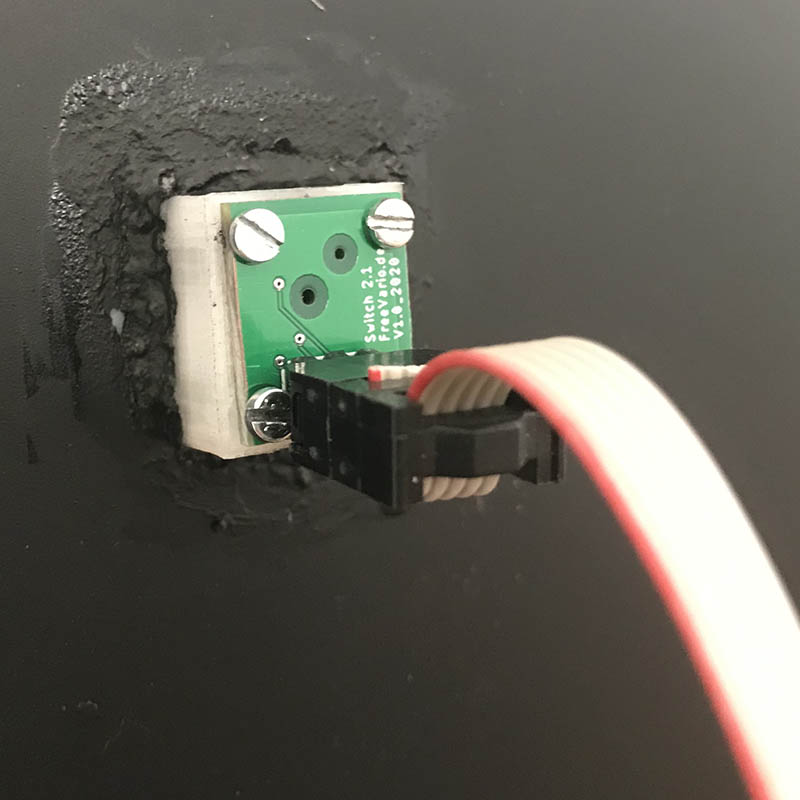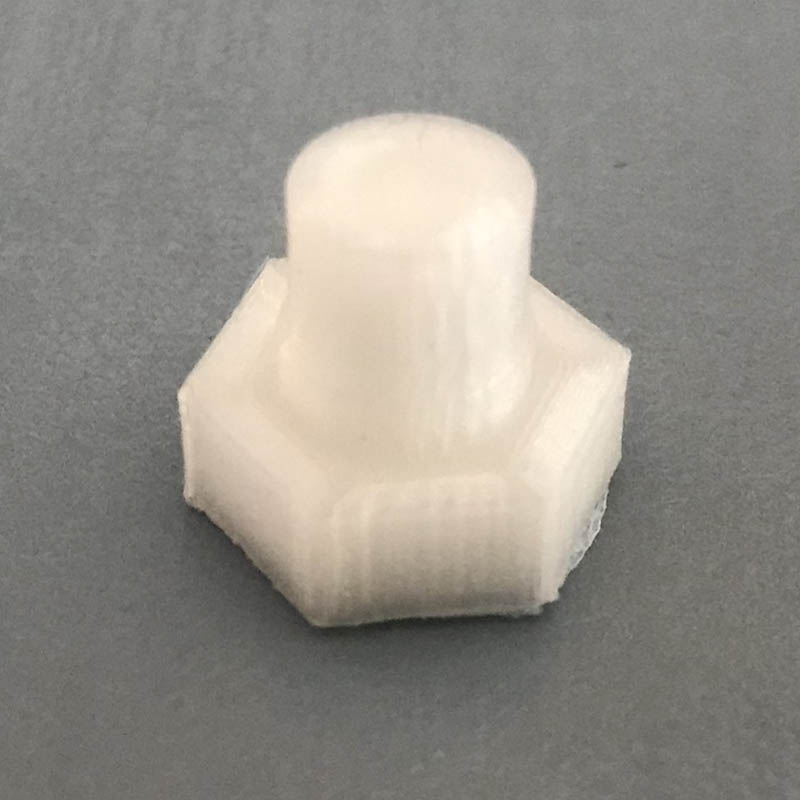Der Daumenknopf stellt eine Alternative zum Drehencoder oder zur Knüpelfernbedienung dar. Es verfügt über die 4 Richtungstaster, mit denen ihr sowohl im OpenVario-Menü, als auch im XCSoar-Menü navigieren könnt. Die mittlere Taste verfügt über vier Funktionen. Ein normaler Klick entspricht Enter, ein Doppelklick entspricht ESC, ein Dreifachklick aktiviert bzw. deaktiviert in XCSoar den Mausmodus und mit einem langen Klick kommt ihr in XCSoar ins Menü. Im Mausmodus könnt ihr mit dem Daumenknopf den Mauszeiger über den Bildschirm führen und durch Drücken des Daumenknopfes den Menüpunkt anklicken, den ihr auswählen wollt. Dadurch ist die Bedienung des Openvarios besonders intuitiv. Das ganze ist vor allem dann sehr praktisch, wenn man das OpenVario administrieren, oder wenn man Flüge herunterladen möchte.
Der Taster hat einen Durchmesser von 20mm und ist mit einer griffigen Gummiabdeckung versehen. Die Maße der Platinen sind (LxBxH) 16,5mm x 18mm x 11mm. Angeschlossen wird das Tastenfeld mit einem Micro-USB-Kabel. Die Montage erfolgt, indem ihr in das Instrumentenbrett ein Loch mit 8,5mm Durchmesser bohrt. Mit Hilfe einer Montagehilfe wird ein Halterahmen ausgerichtet, und mit Epoxydharz aufgeklebt. Auf diesen wird später der Komplett zusammengebaute Daumenknopf aufgeschraubt.
Die Steuerplatine hat eine Größe von (LxBxH) 20mm x 42mm und kann auf zwei Arten mit dem Knopf verbunden werden. Entweder wird sie irgendwo im Cockpit befestigt und mit einem Flachbandkabel verbunden, oder die Steuerplatine wird auf der Knopfplatine aufgesetzt. Welche Variante ihr möchtet, müsst ihr bei der Bestellung angeben, weil sich der Stecker bei den beiden Varianten unterscheidet.
Für alle denen das zu filigran ist, und die etwas mehr Platz im Instrumentenbrett haben, gibt es hier alternativ ein größeres Tastenfeld.
Die Einbauanleitung, sowie weitere Unterlagen findet ihr im Downloadbereich.
The thumb button is an alternative to the rotary encoder or the stick remote control. It has 4 direction buttons with which you can navigate both in the OpenVario menu and in the XCSoar menu. The middle button has four functions. A normal click corresponds to Enter, a double click corresponds to ESC, a triple click activates or deactivates the mouse mode in XCSoar and a long click takes you to the menu in XCSoar. In mouse mode you can move the mouse pointer over the screen with the thumb button and click on the menu item that you want to select by pressing the thumb button. This makes the operation of the Openvarios particularly intuitive. The whole thing is especially useful if you want to administer the OpenVario or if you want to download flights.
The button has a diameter of 20mm and is provided with a non-slip rubber cover. The dimensions of the boards are (LxWxH) 16.5mm x 18mm x 11mm. The keypad is connected with a micro USB cable. The assembly is done by drilling a hole with a diameter of 8.5mm in the instrument panel. With the help of an assembly aid, a holding frame is aligned and glued on with epoxy resin. The fully assembled thumb button is screwed onto this later.
The control board has a size of (LxWxH) 20mm x 42mm and can be connected to the button in two ways. Either it is attached somewhere in the cockpit and connected with a ribbon cable, or the control board is placed on the button board.You have to specify which variant you want when ordering, because the plug differs between the two variants.
For those who find this too delicate and who have a little more space on the instrument panel, there is an alternative to a larger keypad.
The installation instructions and other documents can be found in the download area.











